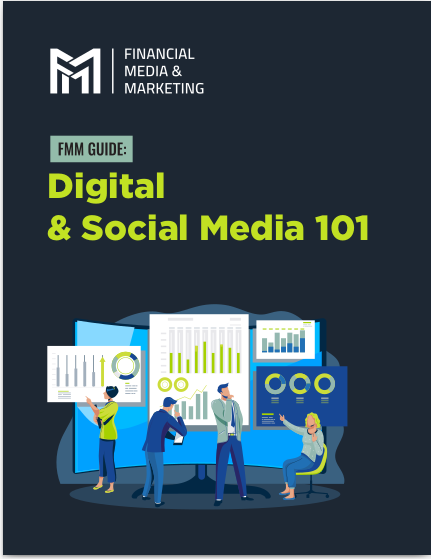Key Takeaways:
-
Your financial advisor website should instantly establish credibility, build trust, and engage visitors—otherwise, you risk losing potential clients to competitors.
-
Customization, compelling content, and a strong call to action (CTA) can transform your website from a generic template into a client-converting powerhouse.
First Impressions Matter: Why Your Website Can’t Be Bland
When a potential client lands on your website, they form an opinion in seconds. If your website looks like every other financial advisor’s site—generic stock photos, vague headlines, and an overwhelming amount of financial jargon—you’re already at a disadvantage. To stand out, you need a website that speaks directly to your target audience, offering them value and a reason to stay.
Crafting a Homepage That Instantly Engages
Clear, Impactful Messaging
Your homepage should answer three key questions within seconds:
-
Who are you?
-
What do you do?
-
Why should visitors care?
If these aren’t clear, visitors will leave. A concise, benefit-driven tagline and a subheading with a value proposition can immediately communicate your expertise.
Aesthetics and Navigation: Simplicity Wins
Avoid clutter. Use a clean design with easy navigation. A straightforward menu with sections like “Services,” “About,” and “Contact” helps users find what they need quickly. Stick to a professional but modern color scheme and readable fonts to keep things visually appealing.
Personalization: Make It About Your Clients, Not You
Speak Their Language
Clients don’t care about financial industry jargon. They care about how you can solve their financial concerns. Address their pain points directly and keep the language simple.
A Personalized Approach
Consider adding an interactive element like a short quiz that helps potential clients identify which services best suit their needs. This engages them while subtly guiding them toward booking a consultation.
Content That Builds Trust (And Keeps Clients Coming Back)
Blog With a Purpose
A regularly updated blog isn’t just for SEO—it’s a trust-building tool. Provide actionable insights that your target audience finds valuable. Focus on:
-
Financial planning for different life stages
-
Common investment mistakes to avoid
-
Yearly tax-saving strategies
Video Content: The Fast-Track to Connection
Not everyone wants to read long articles. Adding a few short, high-quality videos explaining financial concepts, answering FAQs, or sharing market insights can make your site more engaging.
Client Testimonials (But With a Twist)
Rather than long paragraphs of generic praise, display short, punchy testimonials that highlight specific results. A “Before & After” approach works well, showcasing a problem, your solution, and the outcome.
Calls to Action: Guide Visitors to the Next Step
Strategic Placement
Every page should have a clear CTA that moves visitors further down the client journey. Use buttons like:
-
“Schedule a Free Consultation”
-
“Download Our Free Financial Planning Guide”
-
“Subscribe for Weekly Market Insights”
Place CTAs at the top of pages, within content, and at the bottom for maximum visibility.
Reduce Friction
If your booking process is complicated, potential clients will drop off. Keep forms simple, asking only for necessary information. If you can, integrate a one-click appointment scheduling tool.
SEO That Works: Get Found by the Right People
Keyword Optimization
Your website should include terms potential clients are searching for, such as “retirement planning strategies 2025” or “best financial advisor near me.” Avoid keyword stuffing—make it natural and useful.
Local SEO for Financial Advisors
Many clients prefer a local financial advisor. Optimize your Google Business Profile, include your location in website copy, and encourage satisfied clients to leave online reviews.
Fast Loading Speeds and Mobile Optimization
A slow, outdated website kills conversions. Ensure your site loads in under three seconds and is mobile-friendly, as many clients will browse from their phones.
Branding: Set Yourself Apart
A Professional Yet Unique Logo
Your logo should be simple, memorable, and reflect professionalism. Avoid generic finance-related icons like dollar signs or stock graphs—get creative.
Consistent Branding Across All Platforms
Your website, social media, and email campaigns should have a consistent tone, color scheme, and messaging to create a seamless client experience.
Authentic Storytelling
Your “About” page should be more than just a professional bio. Share why you became a financial advisor and what drives you to help clients. A compelling personal story makes you more relatable and trustworthy.
Lead Magnets: Give Something Before Asking
Free Resources That Offer Real Value
A well-crafted lead magnet can turn visitors into leads. Consider offering:
-
A downloadable financial planning checklist
-
A webinar on investing in 2025
-
An email course on budgeting and wealth-building
Make the sign-up process easy and emphasize what clients will gain by providing their email.
Social Proof: Show You’re the Real Deal
Press Mentions and Industry Recognitions
If you’ve been featured in financial publications or have relevant certifications, highlight them on your homepage. This adds credibility and positions you as an authority.
Case Studies That Demonstrate Real Impact
Instead of vague claims, showcase case studies (while keeping client details anonymous) that illustrate how you’ve helped clients achieve financial success.
Making It Easy for Clients to Contact You
Multiple Contact Options
Don’t rely solely on a contact form. Provide an email address, phone number, and even a chatbot for quick inquiries. Make sure your contact page is easy to find.
Social Media Integration
Link to your professional social media profiles so clients can follow your insights and updates. Active engagement on social platforms reinforces credibility.
Keeping Your Website Updated: Don’t Let It Collect Digital Dust
Regular Refreshes
Outdated content or broken links signal neglect. Schedule regular website audits to:
-
Update blog posts with current information
-
Remove irrelevant services
-
Ensure all links and contact forms work properly
Seasonal and Timely Updates
Clients look for different financial advice depending on the time of year. Optimize content based on seasons—tax tips in Q1, investment planning in Q4, and so on.
The Future of Financial Advisor Websites: Where Trends Are Heading
AI-Powered Chatbots
Chatbots can answer common client questions, schedule appointments, and provide initial consultations—enhancing user experience without adding to your workload.
Personalized Client Portals
A secure, login-based portal where clients can track their financial plans and communicate with you can increase engagement and retention.
Voice Search Optimization
More people are using voice assistants for searches. Optimizing for conversational queries like “Who’s the best financial planner near me?” can boost visibility.
Ready to Take Your Website to the Next Level?
Your website is your digital storefront—make sure it reflects your expertise, credibility, and unique value. By refining your messaging, improving user experience, and leveraging modern digital strategies, you can attract more qualified leads and convert them into long-term clients.










